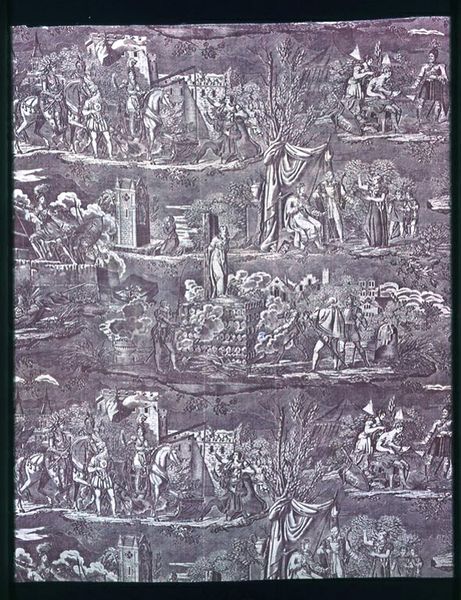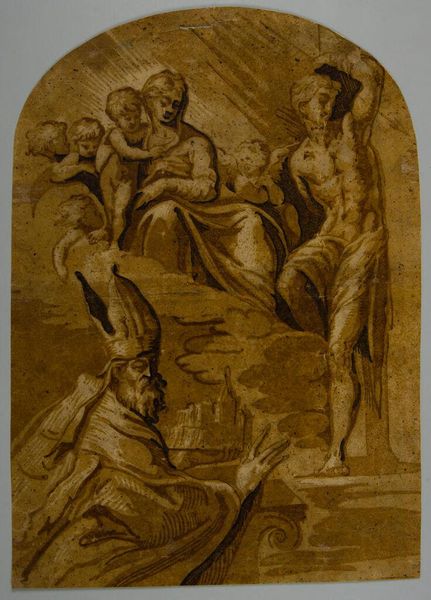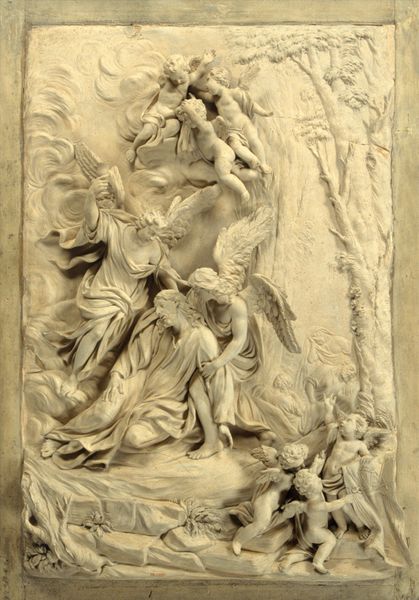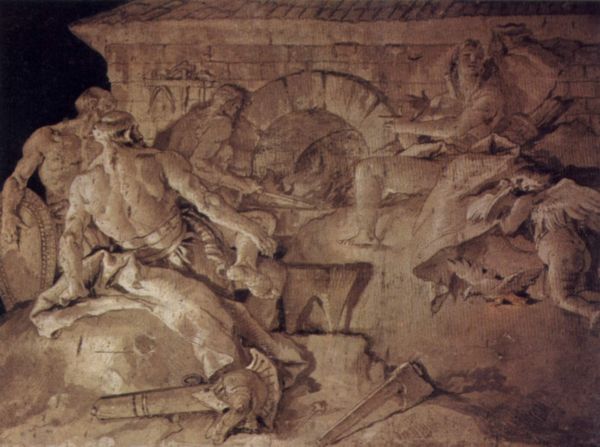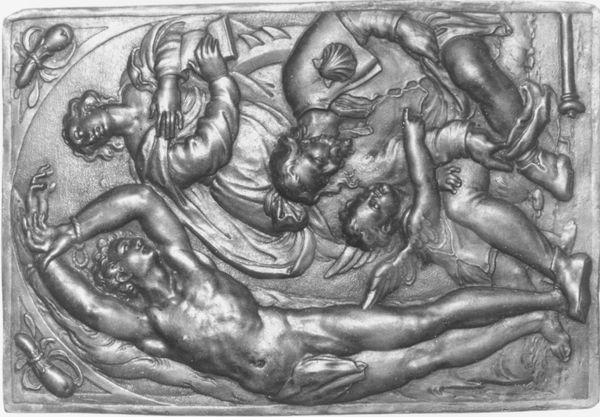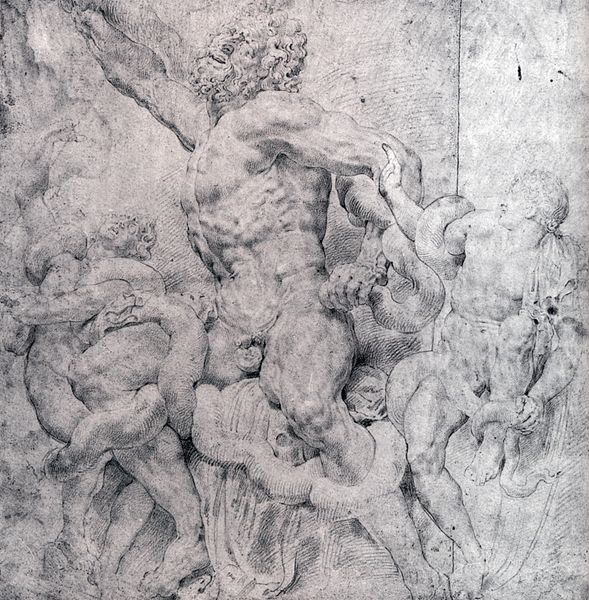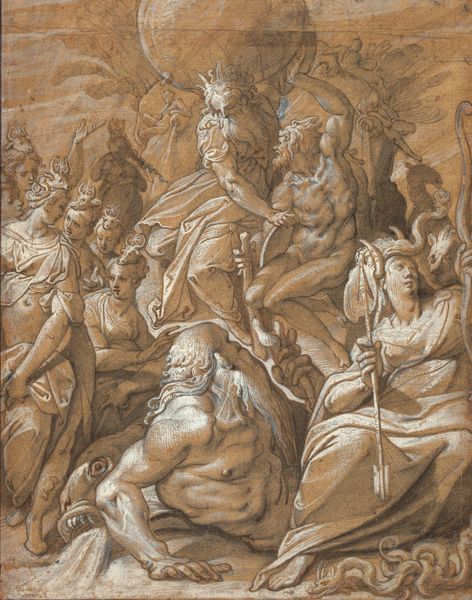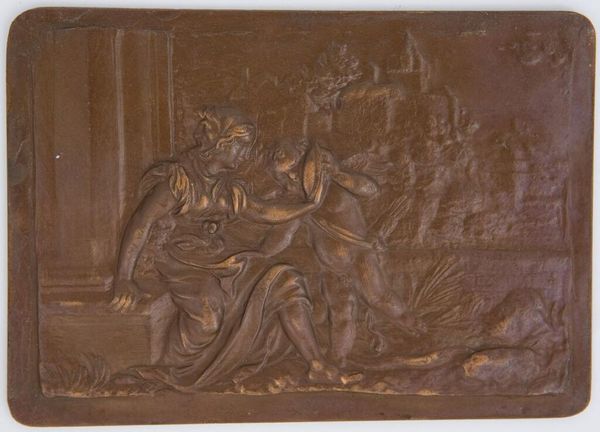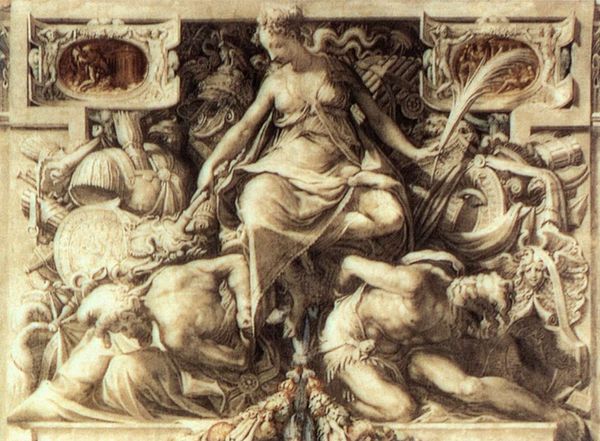
Copyright: Public domain
Hans Baldung’s red chalk drawing presents us with a scene laden with symbols of witchcraft from the early 16th century. Nude witches prepare to depart for the Sabbath, a night of wild revelry and devil worship. Here, the broomstick is not merely a tool for flight but a potent symbol of transformation and transgression, echoing the ancient belief in women's connection to the natural world and their supposed ability to defy earthly bounds. We might recall the classical myths of Diana, the goddess of the hunt, whose nocturnal rides through the forest evoke a similar sense of unbridled freedom and communion with the supernatural. Note the presence of the skull and bones at the bottom of the frame. These macabre elements serve as a chilling reminder of mortality, and are also a visual representation of the witches’ purported pact with darker forces. The emotional power of the image lies in its ability to tap into our primal fears and anxieties about the unknown, the irrational, and the untamed aspects of human nature. Ultimately, this image reflects how symbols can evolve over time, shifting from emblems of fertility and nature to signs of forbidden knowledge. It's a testament to the cyclical nature of cultural memory, where ancient beliefs resurface, transformed and reinterpreted, in the collective psyche.
Comments
No comments
Be the first to comment and join the conversation on the ultimate creative platform.
